
Top 10 Object Oriented Programming Languages in 2025
Upon reviewing the list of top programming languages, we discovered that object oriented programming languages (OOP) comprised the majority of entries.
I’ve noticed that many programmers prefer using Object oriented programming languages to create complex apps since it makes it simple to add or modify features without altering the existing code. Moreover, these languages provide quicker and less expensive development and maintenance.
Let’s go over the fundamentals to understand why object-oriented programming (OOP) is the best choice for your next project!
Basically, there are two types of programming languages: high-level and low-level. Machine-understandable languages are known as low-level languages, and human-language-like, user-friendly languages are known as high-level languages.
An Object-oriented programming language is a high-level language. This kind of programming involves creating objects within a program that can communicate with the user, objects, or other programs. As a result, programs become easier and more efficient.
When code reuse and upkeep are top priorities, these languages should be used since they facilitate development and allow us to add code easily without interfering with other code blocks. Besides this, the best use cases of OOP are:
- When managing large, complex systems with interrelated components.
- To create modular code that can be reused and extended.
- To model real-world entities and their interactions effectively.
- When working in teams, for clear structure and collaboration.
- When building scalable applications that require extensibility.
- To facilitate easier bug tracking and feature addition.
Simula (1967) introduced information hiding to ALGOL, marking the beginning of OOP. However, Java has been one of the most popular object oriented programming languages since the 1990s.
In this article, we will cover the top 10 object oriented programming languages in 2025. But first, let’s find out exactly what this type of programming is and what object-oriented programming language is!
Ready to code smarter? Let’s shape your next project with cutting-edge OOP expertise.
What is Object Oriented Programming & Object Oriented Programming Languages?

The terms “object” and “oriented” are combined to form the term object-oriented.
As we all know, an object is an item or thing that exists in the actual world. They may have characteristics and functions. Consider an item such as a watch. There are attributes to that watch, such as its specific weight and color, and it is made of metal.
Oriented means having a focus on a specific type of object or entity.
A programming paradigm called object oriented programming, or OOP, is focused on specific objects or data. OOP enables programmers to approach variables, data structures, and functions as “objects” that interact with one another rather than as sequential instructions as in procedural programming.
According to leading front-end development companies, OOP is often the best option for manufacturing and designing applications. It enables us to divide the program into manageable bits so that we may address one item at a time.
Languages that support object-oriented programming (OOP) are called object oriented programming languages. These languages allow developers to organize software into objects that combine behavior and data. These languages use object oriented concepts to facilitate modularity, maintainability, and code reuse.
Understanding and applying object-oriented programming requires an understanding of the few fundamental concepts called the pillar of OOP. Let’s cover those key concepts.
Object-Oriented Programming Concepts
To fully comprehend the OOP programming, it is advised to delve deeper into each of the essential components as listed below:
-
Classes
A class is a sort of user-defined data that serves as the model for different objects, properties, and functions. It represents the collection of attributes or operations shared by all objects of a certain kind. It is among the most essential principles of OOP.
Example- A Book class defines a book’s properties (e.g., title, author) and the actions it can perform.
-
Objects
It is a foundational piece of OOP that symbolizes actual entities. The description is the first object to be defined when a class is created. An object contains an instance of a class.
Example- In the library system, each individual book, like “Harry Potter” or “The Great Gatsby,” is an object created from the Book class.
-
Methods
Methods are functions defined within a class that describe the behavior of objects. They can operate on the attributes of the object and perform various actions. It represents an object’s actions and is defined inside a class. A reference to an instance object is used at the beginning of each method in class declarations. Methods give an account of how a thing behaves.
Example- In the Book class, a method like display_info would provide information about the book, such as its title and author.
-
Attributes
Attributes are variables defined within a class that hold the data or state of an object. They serve as a representation of the object’s attributes. In other words, we can say that these attributes serve to differentiate across various classes. Class attributes are defined in the class template and are specific to the class.
Example- The title, author, and pages are attributes that store data about the specific book my_book.
Principles of Object Oriented Programming
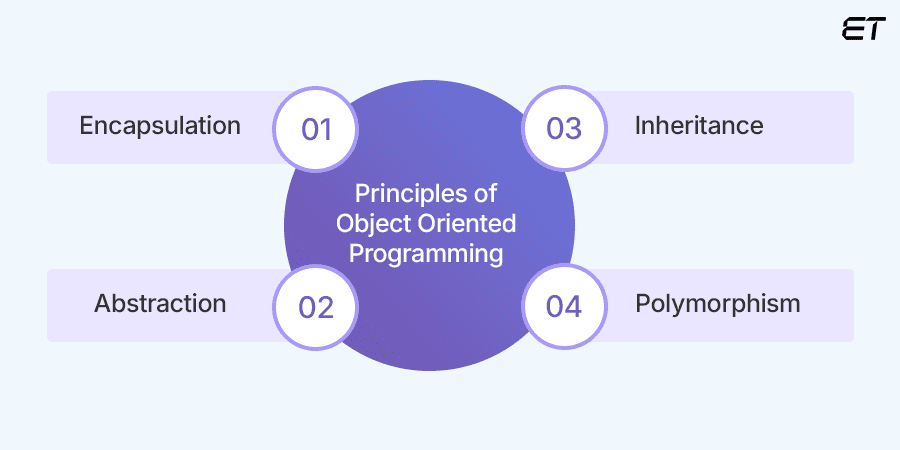
OOP is based on four fundamental principles that guide the design and organization of software. These principles are:
1. Encapsulation
One of the four pillars of OOP is encapsulation. It is the process of combining functionality (methods) that manipulate data with data (attributes) into a single unit or class. This mechanism is essential for protecting data integrity since it prevents external access to an object’s internal workings and prevents developers or other software components from changing them.
Example: In a Book class, the title, author, and pages might be private attributes (accessible only within the class), and you would provide public methods to get or set these values.
2. Abstraction
Abstraction is the process of displaying only an object’s essential properties while concealing complex implementation details. For instance, a function could be abstracted to become its own entity if a programmer writes the same function repeatedly for different objects.
It frees the users from having to comprehend an object’s inner workings in order to engage with it at a higher level. Over time, this idea can make it easier for developers to add or modify new features.
Example: When you use a method like get_title() from the Book class, you don’t need to know how the title is stored internally; you just know that the method will return the title.
3. Inheritance
With inheritance, programmers can construct new classes from existing ones (parent classes), referred to as subclasses or child classes. This decreases development time and guarantees a greater degree of precision. Classes can reuse code and properties from other classes. Developers can reuse similar functionality by assigning relationships and subclasses between items while maintaining a distinct hierarchy.
Example: Suppose you have a base class, Book, and want to create a specialized class called EBook with additional attributes like file format and file size.
4. Polymorphism
In OOP, polymorphism refers to the ability to “take more than one shape.” It describes the capacity to treat things differently based on their nature. Polymorphism enables us to specify various object handling techniques according to the object’s derived class. Additionally, it permits using a single interface for a broad category of actions. The exact nature of the situation determines the specific action.
Example: Suppose both Book and EBook classes have a method read(). Polymorphism allows you to use the same method name for different types of books, but each will have its own implementation.
Advantages of Object Oriented Programming: Why OOP Matters?
Object-oriented programming (OOP) offers several key benefits that make it a popular paradigm in software development. Here are some of the primary advantages:
- This programming breaks down code into discrete objects and classes, making it easier to manage and understand.
- It promotes code reuse by allowing classes to be used across different programs and projects.
- It combines data and methods within objects, protecting the internal state and exposing only necessary functionalities.
- It enables new classes to inherit attributes and methods from existing classes, fostering code reuse and reducing redundancy.
- It simplifies updates and bug fixes by isolating changes to specific modules.
- It facilitates the development of scalable systems by allowing for easy extension and integration of new features.
- It allows objects to be treated as instances of their parent class, with methods behaving differently based on the actual object type, enhancing flexibility.
- It hides complex implementation details behind a simple interface, allowing developers to work with higher-level concepts.
Top 10 Object-Oriented Programming Languages List
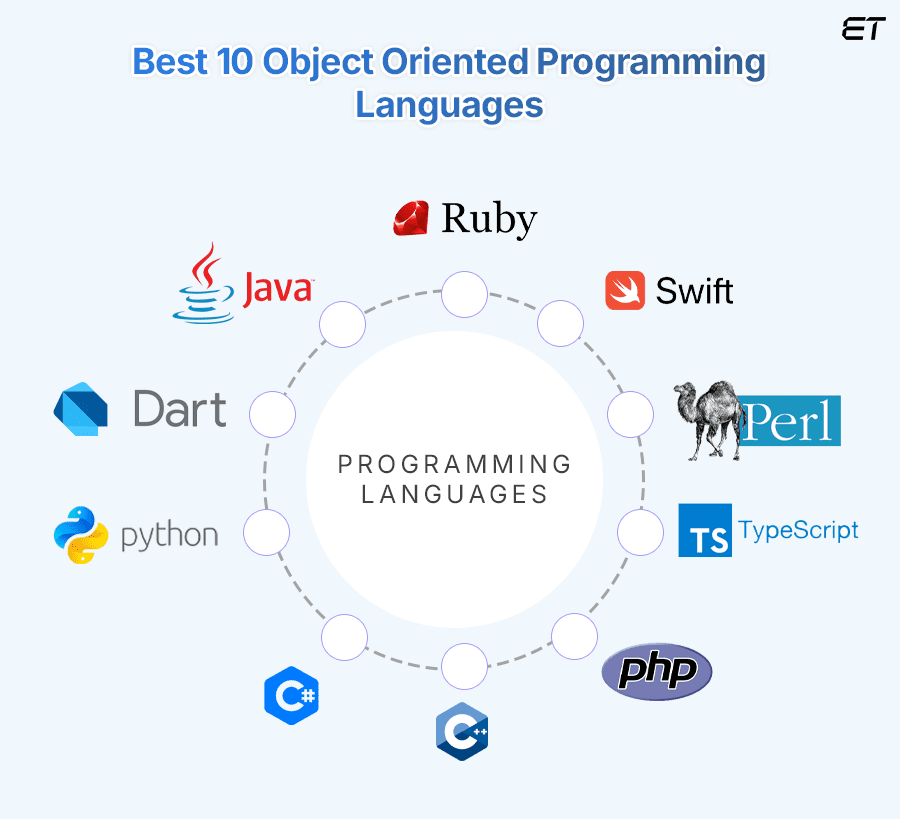
Object oriented programming languages enable developers to create modular, reusable code by organizing data and behavior into objects.
Let’s explore the top 10 object oriented programming languages list highlighting their key features, pros, and cons.
1. Java
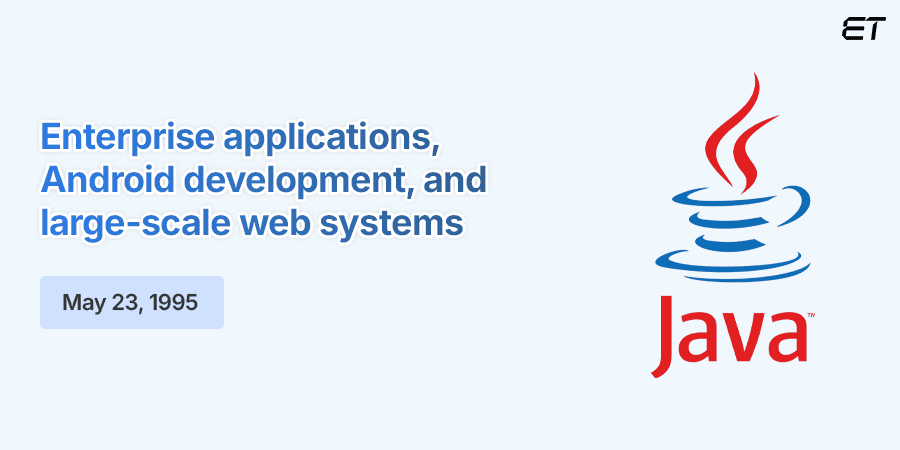
Object-oriented programming in Java is a highly favored and extensively utilized language. It is a popular choice for Android development, enterprise-level applications, and large-scale systems because of its huge libraries and “write once, run anywhere” feature.
Java is a suitable first language for learning programming concepts because it is based on C and C++ and is regarded as straightforward to learn. Its vast community can help front-end and back-end developers with code issues, and it boasts a large number of active users.
Additionally, the Java platform software is routinely updated and maintained. Moreover, this language provides a number of tools for deployment, testing, automatic editing, debugging, and change management.
Features of Object-Oriented Programming: Java
- It promotes modular, reusable code with classes and objects.
- It provides features like bytecode verification, exception handling, and security APIs.
- It allows concurrent execution of multiple parts of a program.
- Just-In-Time (JIT) compiler boosts execution speed.
- It has extensive libraries for various tasks.
Pros & Cons of Java
| Pros | Cons |
| Multithreaded capabilities | Slower performance compared to C/C++ |
| Strong community support | Java applications often require more memory |
| Platform-independent with JVM | High memory usage |
| Automatic memory management (Garbage Collection) | Limited GUI capabilities in standard libraries |
| Extensive standard library | No support for low-level programming |
2. Dart
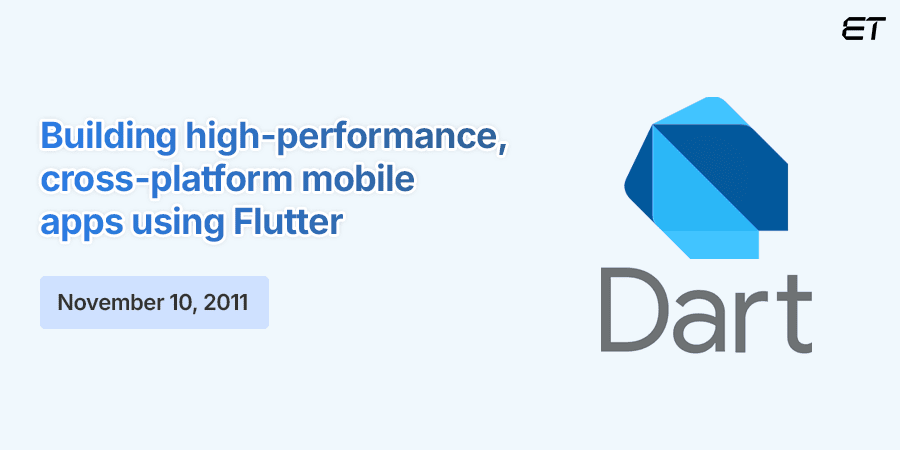
Google initially introduced Dart as a competitor to JavaScript. With frameworks like Flutter, Dart may be used to create standalone applications and applications for mobile devices. Dart is used for many different things, including server-side applications, data handling, and UI design.
It is particularly well-liked for leveraging the Flutter framework to create mobile apps. With Flutter, developers can use Dart to create incredibly fast cross-platform apps for iOS and Android smartphones.
This object-oriented programming language has built-in support for asynchronous programming. This implies that programmers can create code that runs in parallel without interfering with other code’s operations. Applications can function more effectively and efficiently when asynchronous programming handles tasks like file operations, network requests, and user interactions.
Features of Object-Oriented Programming: Dart
- It is designed for building responsive and smooth user interfaces.
- We can instantly view changes in code without restarting the app.
- It offers both dynamic and static typing for flexibility and safety.
- Compiles to native code, offering high-speed execution.
- It supports async/await for easier handling of asynchronous tasks.
Pros & Cons of Dart
| Pros | Cons |
| Optimized for building visually appealing user interfaces. | Smaller community and fewer resources compared to JavaScript or Java. |
| It comes with a strong community and ecosystem. | It requires learning new concepts if you are unfamiliar with Dart and Flutter. |
| Quickly see code changes in real-time, speeding up development. | Fewer tools and integrations compared to more mature languages. |
| Simplifies async tasks with async/await support. | Dart’s web performance can be slower than JavaScript. |
| Develop once and deploy across mobile, web, and desktop. | Fewer libraries and frameworks are available. |
3. Python
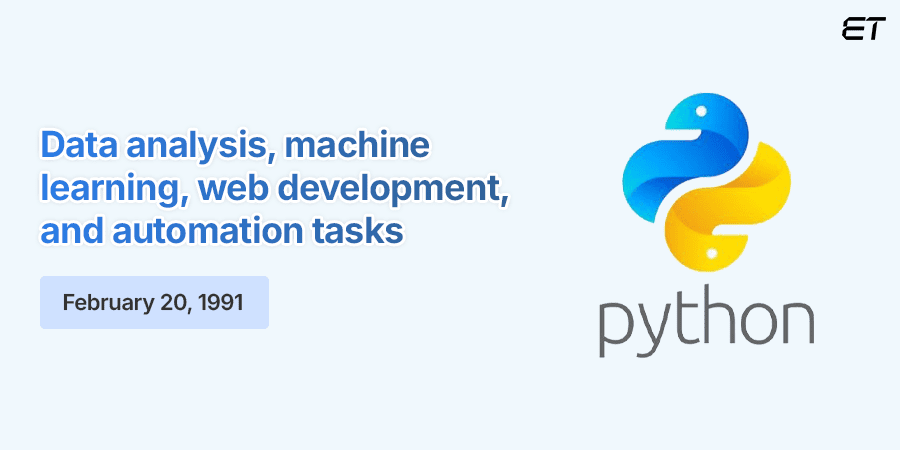
Object-oriented programming Python is a high-level, interpreted language with dynamic semantics. Because of its straightforward, basic syntax, Python promotes readability, which lowers software maintenance costs. This language is popular among novice and seasoned developers because of its well-known readability and simplicity. Although it is not strictly object-oriented, it does adhere to OOP principles and is utilized in web development, data science, automation, and other fields.
Python aids cybersecurity through its extensive libraries and tools for tasks like network scanning, penetration testing, and malware analysis. Its simplicity and readability enable quick scripting to automate security tasks. Popular tools like Scapy for packet manipulation, Nmap for network scanning, and PyCrypto for encryption are Python-based, making it a preferred language for developing and deploying security solutions efficiently.
Features of Object-Oriented Programming: Python
- It executes code line by line, facilitating debugging.
- There is no need to declare variable types explicitly.
- It consists of a rich set of libraries for various applications (e.g., NumPy, Pandas, TensorFlow).
- It is used in web development, data science, AI, automation, and more.
| Pros | Cons |
| Runs on various operating systems without modification. | It is not ideal for memory-intensive tasks. |
| Easily integrates with other languages and technologies. | Limits performance in multi-threaded applications. |
| Large, active community with abundant resources. | Less suitable for mobile app development. |
| Facilitates quick prototyping and development. | Dynamic typing can lead to unexpected runtime errors. |
| Simple, clean syntax enhances code readability. | It is not ideal for low-level programming tasks. |
Empower your vision with Python wizards who craft intelligent, scalable, and robust solutions just for you.
4. C#

C# is one of the top 5 object oriented programming languages on GitHub. It is an inventive, cutting-edge, open-source, cross-platform object oriented language. While hiding much of the underlying complexity of the language’s built-in features, C# offers a simple, accessible language for developing an application’s logic.
It is a general-purpose programming language that can develop a wide range of programs and applications, including games, cloud-based services, mobile and desktop apps, websites, enterprise software, and cloud-based apps. However, it is frequently employed in developing open-source software or professional, dynamic websites built on the .NET framework. Because of this, you can still use C# to create a completely functional website, even if you are not a big fan of Microsoft architecture.
Features of Object-Oriented Programming: C#
- It seamlessly integrates with .NET libraries and other languages.
- Automatic memory management reduces memory leaks.
- It runs on Windows, macOS, and Linux using .NET Core.
- It comprises extensive libraries for various tasks, including GUI, data access, and networking.
- It supports async/await for efficient multitasking.
Pros & Cons of C#
| Pros | Cons |
| Facilitates modular and maintainable code development | Historically tied to Windows, though .NET Core improves cross-platform support. |
| Enforces strict type-checking at compile-time. | Fewer third-party libraries compared to more established languages like JavaScript or Python. |
| Excellent interoperability with Windows and Microsoft technologies. | This language may be challenging for those unfamiliar with its extensive features and .NET framework. |
| Excellent tools and debugging capabilities in Visual Studio. | Memory overhead can lead to unpredictable performance in high-performance scenarios. |
| Runs on multiple operating systems with .NET Core. | It’s complex syntax can be verbose and complex for beginners |
5. C++
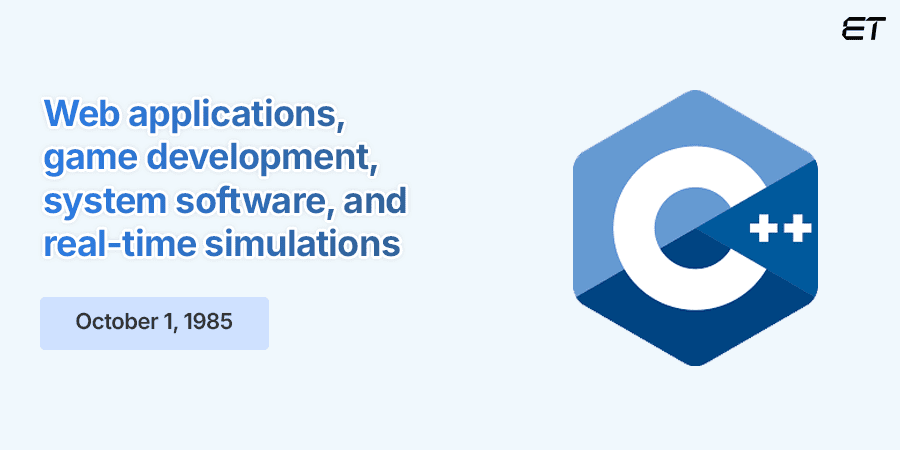
It is a high-level, object oriented programming language. It is a computer programming language extension incorporating OOPs and is derived from C. Combining the best aspects of procedural and OOP; it is one of the powerful object oriented programming languages. It is extensively used in applications needing high performance, game development, and systems software.
There are various benefits of using C++ for programming. The object-oriented nature of the code makes it simple to classify and organize. You can reuse code rather than writing it all over again. Additionally, this programming language allows for direct hardware interaction with computers. You will, therefore, be able to regulate how a system makes use of its hardware, software, and memory.
Features of Object-Oriented Programming: C++
- It allows direct manipulation of hardware and memory.
- It offers high performance and efficiency due to its compiled nature.
- It supports procedural, object-oriented, and generic programming.
- It provides reusable components like vectors, lists, and algorithms.
- Extensively used in system/software development, game development, and high-performance applications.
Pros & Cons of C++
| Pros | Cons |
| Manual control over memory allocation and deallocation. | Requires a deeper understanding of programming concepts. |
| Works on various operating systems and platforms. | Error-prone and can lead to memory leaks or crashes. |
| It provides robust data structures and algorithms. | It is more complex and time-consuming to write and debug code. |
| Extensive libraries for diverse applications. | Risks from low-level operations can cause unpredictable issues. |
| Offers efficient execution and low-level memory access. | Lacks some modern features found in newer languages. |
6. PHP

PHP is a server-side scripting language that can be used for general-purpose programming and web development. A programming paradigm, Object-Oriented Programming (PHP OOP), was added to PHP5 to aid in the creation of intricate, reusable web applications.
This object oriented programming language is often used and may be integrated into HTML. Because of its HTML capabilities, PHP has continued to be a popular language among developers as it simplifies HTML code.
Leading PHP companies leverage PHP’s capabilities to develop robust software by utilizing its extensive frameworks (like Laravel and Symfony) to create scalable and secure applications. These companies can also utilize PHP’s vast ecosystem and community support to build custom solutions quickly.
Features of Object-Oriented Programming: PHP
- It is easily integrated with HTML, allowing for dynamic web content.
- Runs on various operating systems and servers.
- It supports various databases like MySQL, PostgreSQL, and SQLite.
- It offers a wide range of functions for web development tasks.
- It comes with a large community with abundant resources and documentation.
Pros & Cons of PHP
| Pros | Cons |
| Easy to learn and use, with a syntax similar to C and Perl. | Common issues like SQL injection are not properly managed. |
| Numerous frameworks and libraries for rapid development. | Generally slower compared to some modern languages and frameworks. |
| Runs on various operating systems and web servers. | Historically, error handling and debugging tools have been less robust. |
| Free to use with a large community for support. | Older PHP codebases can be challenging to maintain. |
| Dynamically generates web pages on the server. | The quality of third-party libraries and frameworks can vary. |
7. Ruby
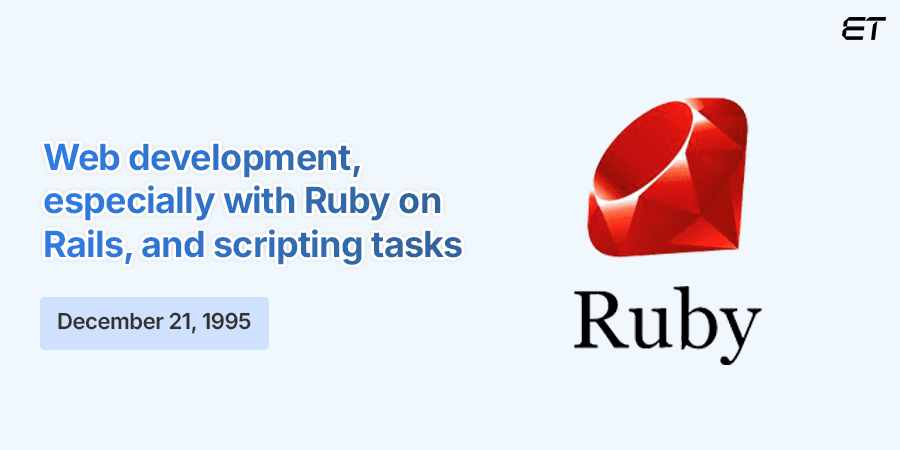
Ruby is an object-oriented, reflective, dynamic, and open-source programming language. Although many object oriented programming languages exist, developers use Ruby to build applications quickly with clean and understandable code. It is compatible with all operating systems, including Windows, Mac OS, and all UNIX variants. In Ruby, everything is an object. Every piece of code has its own set of properties and actions. In this context, actions refer to methods and properties to variables.
Ruby hides a lot of information from programmers, which is one of its many user-friendly features. Because of this, Ruby programming is far simpler than programming in other popular languages like C and C++, which are more complex. On the other hand, it also implies that debugging the code may become more challenging.
Features of Object-Oriented Programming: Ruby
- It allows for flexible and dynamic code without explicit type declarations.
- Emphasizes code readability and simplicity with a clean, elegant syntax.
- Automatic memory management to handle object lifecycle.
- It supports powerful code manipulation at runtime.
- Provides an intuitive ORM for database interaction in Rails.
Pros & Cons of Ruby
| Pros | Cons |
| Emphasizes clean and elegant code that’s easy to understand. | Generally slower than compiled languages like C++ or Java. |
| Works on various operating systems seamlessly. | Dynamic typing can lead to unexpected runtime errors. |
| Tools like Ruby on Rails enhance rapid application development. | Limited native support for parallel processing. |
| Flexible coding without strict type constraints. | Memory consumption is high, affecting performance in large applications. |
| It has a rich set of libraries and gems for various functionalities. | The quality of gems and libraries can vary. |
8. TypeScript
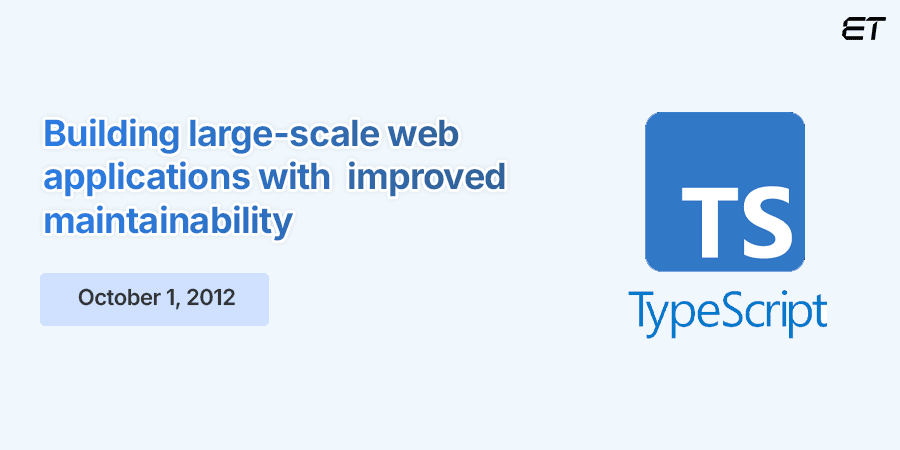
Building on JavaScript, TypeScript is an object-oriented, compiled, strongly typed programming language. As a Strict Superset of JavaScript, it can be used to implement anything in JavaScript and add increased functionality. Integrating TypeScript code into JavaScript projects becomes simpler as it is translated to JavaScript code.
Additionally, it provides better documentation and easier collaboration through explicit type definitions. With its growing ecosystem and compatibility with existing JavaScript libraries, TypeScript offers a robust foundation for building scalable, maintainable applications, making it a preferred choice for many leading developers seeking improved developer experience and code robustness.
Features of Object-Oriented Programming: TypeScript
- It compiles to standard JavaScript, running on any JavaScript environment.
- It supports ES6+ features, including classes, modules, and async/await.
- Excellent integration with editors and IDEs, providing features like autocompletion and refactoring.
- It enables robust type definitions and reusable components.
Pros & Cons of TypeScript
| Pros | Cons |
| Enhances code quality and reduces runtime errors by catching issues at compile time. | It adds complexity compared to plain JavaScript, requiring learning new concepts. |
| Organizes code into modules and namespaces. | It relies on tools and configuration, which can be cumbersome. |
| It makes large codebases more maintainable and understandable. | It can introduce additional complexity and overhead in smaller projects. |
| Reduces the need for explicit type declarations while still providing type safety. | It requires a build step to convert TypeScript to JavaScript. |
| Infers types automatically, reducing the need for explicit type annotations. |
Unravel the secret to smarter coding! Uncover which language drives better results for your business.
9. Pearl
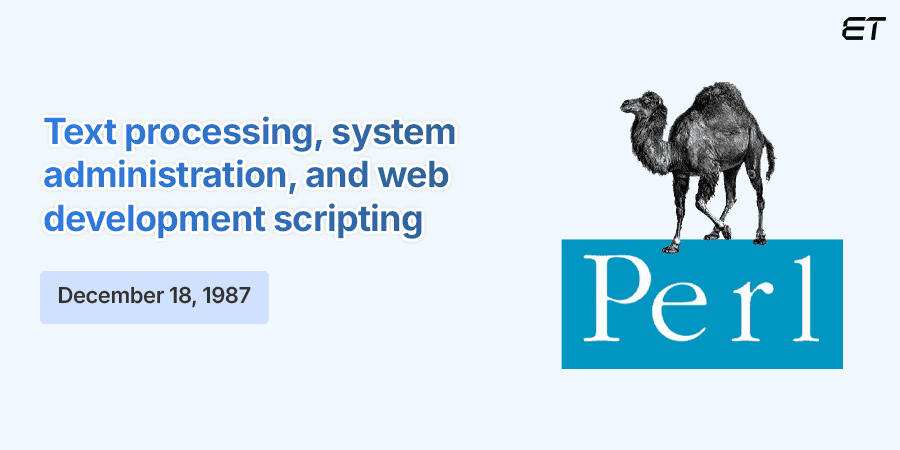
Perl is a dynamic, high-level, interpreted programming language that can be used for various purposes. It supports both object-oriented and procedural programming. This programming language is very similar to C and is easy for users familiar with C and C++.
It is considered one of the most secure object oriented programming languages. According to Coverity reports, it has a low defect density. In other words, compared to other programming languages like Python, Perl has fewer bugs and security problems.
Perl is frequently employed as a departmental glue between several systems that cannot work together smoothly or uniformly. System administrators favor Perl for its powerful text processing, regular expressions, and ease of writing complex scripts. Its versatility in handling system tasks, log file analysis, and automation, combined with extensive libraries, makes it a preferred tool for managing systems efficiently.
Features of Object-Oriented Programming: Pearl
- Excellent for manipulating and analyzing text with powerful regular expression support.
- There is no need to declare variable types explicitly, offering flexibility in coding.
- It supports multiple programming paradigms, including procedural, object-oriented, and functional programming.
- It comes with a rich set of built-in functions and CPAN (Comprehensive Perl Archive Network) for a wide range of applications.
Pros & Cons of Pearl
| Pros | Cons |
| Runs on various operating systems. | It is hard to read and maintain due to its flexible and sometimes convoluted syntax. |
| It is an established language with a long history of use in various domains. | Older Perl codebases can be challenging to work with and modernize. |
| Well-suited for web development, network programming, and system administration. | The language’s extensive features and quirks can be challenging for newcomers to grasp. |
| Suitable for both small scripts and large-scale systems. | It can be slower compared to newer languages for specific tasks. |
| Works across different operating systems. | Less commonly used today, leading to fewer resources and community support. |
10. Swift
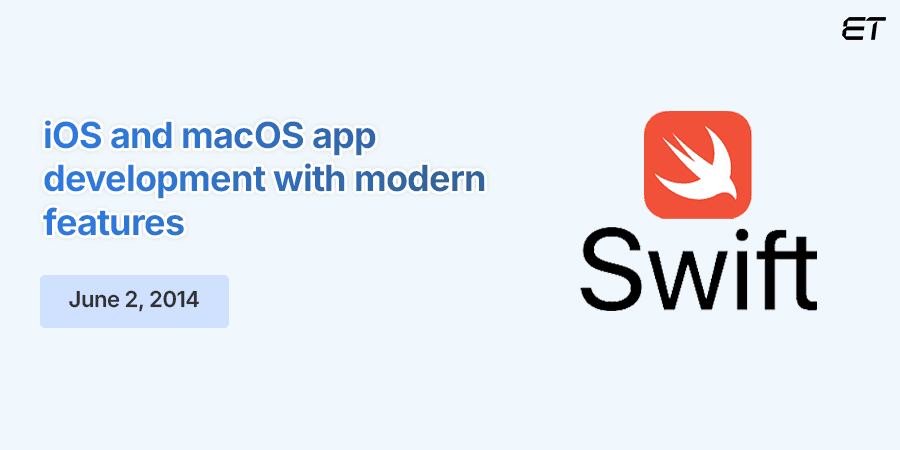
Swift is one of the clean and concise object oriented programming languages that is becoming increasingly popular. It is also expanding quickly. Swift was first created exclusively for native iOS programming, but programmers can now utilize it to develop secure, manageable, and user-friendly code for Windows and Linux.
Must read Flutter vs Swift, which is best for iOS app development.
Swift is a quick writer and fast to run. It maintains developer friendliness without compromising performance, offering consistent and predictable performance comparable to C-based languages. It is both powerful and approachable. For example, Swift scales to meet your demands from a single line saying “Hello, World!” to hundreds of thousands of lines in large-scale apps.
Swift has characteristics that help developers have the control they need in a true systems programming language while also making code easier to read and write. Swift also incorporates ideas from other languages. For example, named parameters from Objective-C are written in a clear syntax, making Swift APIs simple to read and update.
Features of Object-Oriented Programming: Swift
- Strong static typing helps prevent errors and improve code reliability.
- Automatic reference counting (ARC) handles memory management efficiently.
- It provides an interactive environment for experimenting with Swift code in real-time.
- It includes features like optional and error handling to avoid common pitfalls.
- It provides an interactive environment for real-time code experimentation and learning.
Pros & Cons of Swift
| Pros | Cons |
| Compiles to native code for high performance and speed. | Frequent updates can lead to compatibility issues with existing code. |
| Free to use with a growing community contributing to its improvement. | Some tools and IDEs may have limited support or bugs. |
| It supports development for both iOS and macOS and expands to other platforms. | It can be slower than some other languages due to complex features. |
| Optionals and error handling help avoid common programming pitfalls. | Modern syntax and concepts may be challenging for newcomers. |
| Integrates seamlessly with Objective-C and existing Cocoa frameworks. | There is less support for older Objective-C libraries and frameworks. |
Choose the Right Object Oriented Programming Language!
Object-oriented programming will continue to benefit the software development industry. This programming facilitates easier testing and debugging while streamlining complex systems and improving maintainability. OOP’s emphasis on inheritance and encapsulation makes code management flexible, structured, and well-organized.
While choosing the best object-oriented programming language, remember that you should not spend time learning it. Without practical experience, you will end up making a wrong decision.
Instead, select the right programming language with the assistance of a trustworthy development partner. Top-notch programmers writing top-notch code are essential to your organization. Based on the current project, they will employ different languages.
An experienced full-stack development company considers the below-given factors while choosing the best OOP language for your project:
- Project requirements: match the language’s features with your project’s needs, such as performance, scalability, or specific libraries.
- Language ecosystem: assess available tools, libraries, and community support.
- Team expertise: choose a language your team is proficient in or willing to learn.
- Integration: ensure compatibility with existing systems and technologies.
- Maintainability: prefer languages with strong modularity and code organization support.
- Future growth: select a language that aligns with long-term project goals and industry trends.
Are you seeking a reliable and experienced custom web and app developer to entrust to your upcoming software development project? Leave us a message, and we will get back to you within 24 hours!
Turn your ideas into impact. Contact us today for tailored solutions and personalized assistance.
Frequently Asked Questions
1. How is an object-based programming language different from an object oriented programming language?
Object-based programming languages support objects and encapsulation but lack full OOP features like inheritance and polymorphism. In contrast, object oriented programming languages offer a complete OOP model, including encapsulation, inheritance, and polymorphism, enabling more robust and flexible code structures.
2. What is the difference between procedural and object oriented programming?
Procedural programming focuses on functions and sequences of instructions, while OOP centers around objects and classes, emphasizing data encapsulation, inheritance, and polymorphism. OOP promotes modularity and code reuse, whereas procedural programming is more linear and function-driven.
3. Functional vs Object-oriented programming: Which is better?
Choosing between functional and object-oriented programming depends on the project. Functional programming excels in immutability and statelessness, enhancing predictability and concurrency. Object-oriented programming offers robust data modeling and modularity through objects and inheritance. The “better” approach depends on specific project needs and team expertise.
4. Which are the best object oriented programming languages for developing mobile apps?
For mobile app development, the top object oriented programming languages include Java and Kotlin for Android and Swift for iOS. These languages offer robust OOP features and are well-supported, with extensive libraries and frameworks tailored to them.
5. Is there any disadvantage of using OOP?
Everything has some strengths and weaknesses, and so does this programming. OOP can introduce complexity with deep inheritance hierarchies and over-engineering. It may lead to performance overhead due to abstraction layers. Additionally, OOP’s emphasis on objects can result in excessive memory usage and less straightforward solutions than simpler procedural or functional approaches.
Despite these drawbacks, OOP remains popular due to its ability to model complex systems with modularity, reusability, and maintainability. If you want to explore OOP more, connect with our support team!
6. Is Python an OOP language?
Yes, Python is an object-oriented language. It lets you create classes, objects, and apply OOP principles like inheritance, encapsulation, polymorphism, and abstraction.
7. What are the four basics of OOP?
The four basics of OOP are:
- Encapsulation: Bundling data and methods into a single unit (class).
- Inheritance: Reusing and extending existing classes.
- Polymorphism: Using one interface for multiple implementations.
- Abstraction: Hiding complex details and showing only essential features.
8. What are the 5 rules of OOP?
The five rules of OOP are:
- Single Responsibility: A class should have only one job.
- Open/Closed: Classes should be extendable, not modifiable.
- Liskov Substitution: Subclasses should work as replacements for their parent classes.
- Interface Segregation: Don’t force classes to implement unnecessary methods.
- Dependency Inversion: Rely on abstractions, not concrete implementations.



